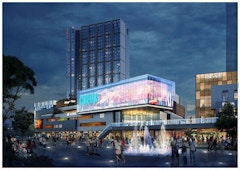
Architectural Shape Optimization
This paper explores the architectural shape optimization of typical housing typologies: slab and high-rise residential buildings to reduce primary

This paper explores the architectural shape optimization of typical housing typologies: slab and high-rise residential buildings to reduce primary


This paper will explore steel forming methods other than cold drawn or hot rolled processes, and how they allow steel to be utilized as the primary

The goal is to explore the role and methodology employed between the architect and engineer as they look to resolve the opposing demands of design


The performative and visual aspects of curved forming/bending thin “formable” planar materials is explored. Early tests for deflection indicate that

Traditional architecture can be a valuable source of inspiration for designers. Sustainable design concepts in traditional architecture have been


Kinetic responsive systems are gaining attention in architectural applications, to reduce the building’s energy consumption and environmental impact,





Building skins play a pivotal role in architecture. Other than the aesthetical and architectural aspects, facades are key to the climate performance,


This article discusses design, prototype development and a simulation study of novel types of facade systems, which integrate thermoelectric (TE)